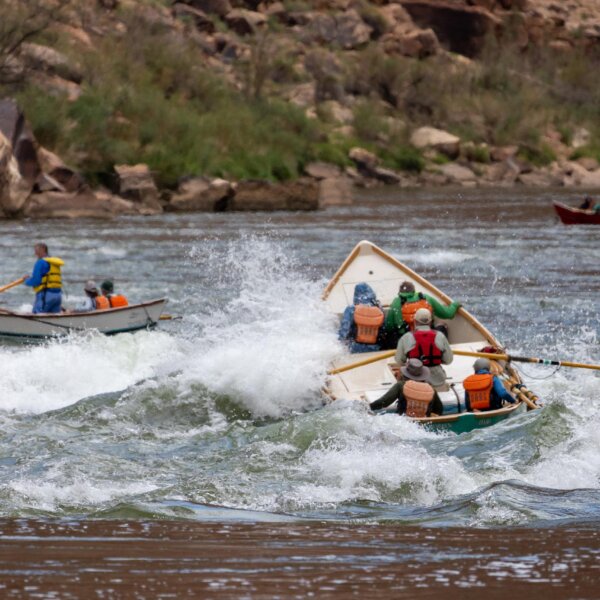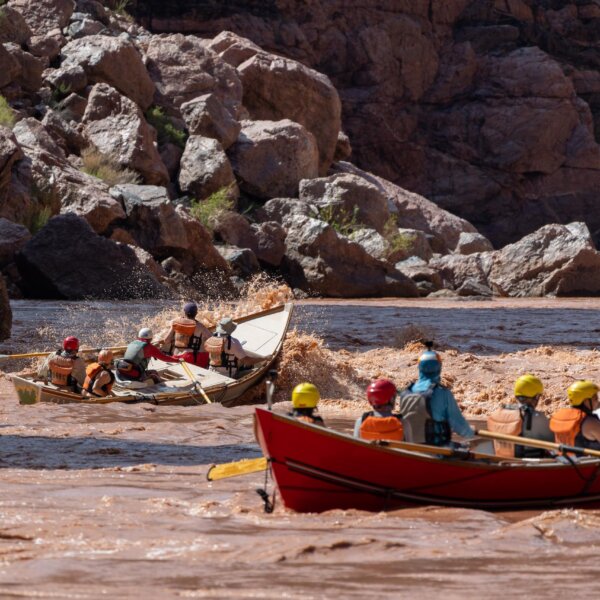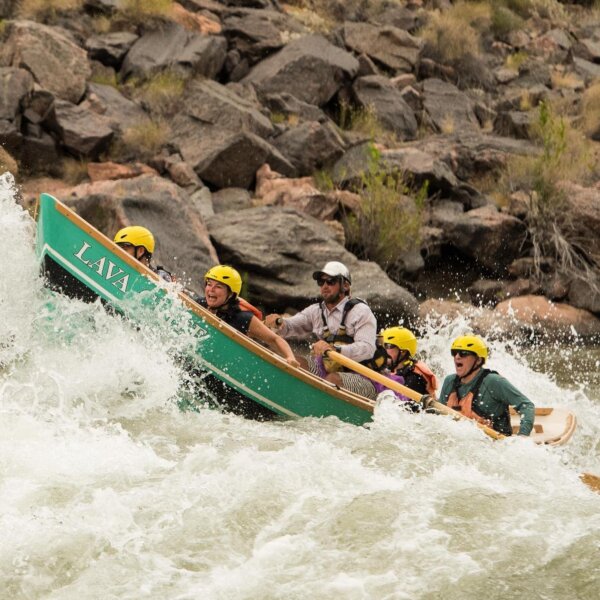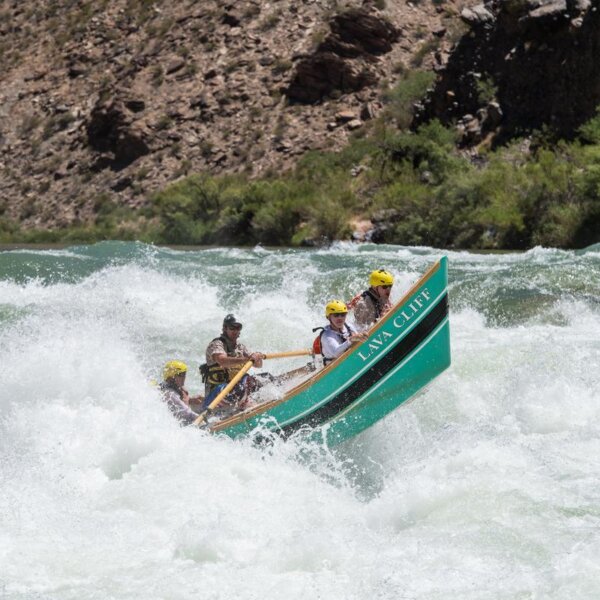
Grand Canyon Dories

Colorado River Trips by Dory — A Grand Tradition
For a truly exceptional boating experience, a dory boat trip through Grand Canyon on Arizona’s Colorado River provides a unique and exciting alternative to an inflatable raft. Grand Canyon Dories are small, traditional and charmingly elegant, rigid boats designed to carry four people and a tremendous amount of gear. At 16′ 9″ stern to bow, with six hatches, passenger benches and hardwood rails and trim, dories are able to run a river much more quickly than a raft. However, a Grand Canyon dory boat trip is not about speed, but about your own intimate, some might say organic experience of the river.

Like Nothing Else
With a high crew-to-passenger ratio, our Grand Canyon dory trips provide better access to a more relaxed and energetic crew while they provide you with a quality of service unmatched in the industry. We pay respect to the mighty Colorado River, its surrounding environment and your river experience by setting a slower, more relaxed pace without sacrificing the thrill and excitement of your whitewater adventure in Grand Canyon. With professional guides born to row and boats designed with every consideration in mind, your only concern will be taking in the amazing scenery that sets the background of your Grand Canyon river trip.

The History of Grand Canyon Dories
Our story would not have been written if it weren’t for those who popularized and fought for some of the West’s wildest waters. In essence, it started over 130 years ago, in 1869. Major John Wesley Powell led a four-boat expedition down hundreds of miles of uncharted water on the Green and Colorado Rivers. Powell and his men were the first European-American explorers to behold the enormous beauty of Grand Canyon, today, one of the world’s seven wonders.
A century later, a young environmentalist named Martin Litton began running trips down that same river. Inspired by the canyon’s grandeur, and driven by a will to save it from proposed dams and inevitable destruction, Litton founded Grand Canyon Dories, the canyon’s first dory operation.

The Legacy Continues
About the same time, in 1969, George Wendt launched OARS—the first exclusively non-motorized rafting company permitted to run river trips in the Grand Canyon. Today, Grand Canyon Dories and OARS are part of one integrated family born of the Grand Canyon. In 1988, Martin Litton entrusted Wendt to carry on the legacy of Grand Canyon Dories on the condition that the company would exclusively run dories and that the trips would always be oar-powered. Many of Martin’s early boatmen continue to row dories for us today and the entire organization takes great pride in carrying on the dory tradition in Grand Canyon as well as on other rivers of the West.

The Next Generation
We now have second generation dory guides on a number of our river trips; sons and daughters who’ve inherited their love and knowledge of rivers from parents who guided before them. We particularly covet the legacy of Martin Litton, a man who many credit with literally saving the canyon and who, until his passing in 2014, tirelessly advocated for the threatened wilds of the West.
In 2015 OARS built a new dory, the Marble Canyon, dedicated to Martin Litton.
See the Movie: Martin’s Boat is a film that honors the legacy of Martin Litton and follows the newest boat (at the time) in the Grand Canyon Dories fleet, the Marble Canyon, on its maiden voyage down the legendary Colorado River through the grandest canyon on Earth.
O.A.R.S. Grand Canyon, Inc. is an authorized concessioner of Grand Canyon National Park.

Find Your Perfect Trip
DORY ADVENTURES IN GRAND CANYON
Grand Canyon Dories: Whitmore Wash to Pearce Ferry
Location:
Grand Canyon, Arizona
Adventure Level:
Moderate
Minimum Age:
7
Grand Canyon Dories: Lees Ferry to Diamond Creek
Location:
Arizona
Adventure Level:
Challenging
Minimum Age:
12
Grand Canyon Dories: Lees Ferry to Pearce Ferry
Location:
Grand Canyon, Arizona
Adventure Level:
Challenging
Minimum Age:
12
Grand Canyon Dories: Lees Ferry to Pipe Creek
Location:
Grand Canyon, Arizona
Adventure Level:
Challenging
Minimum Age:
12
Grand Canyon Dories: Lees Ferry to Whitmore Wash
Location:
Grand Canyon, Arizona
Adventure Level:
Challenging
Minimum Age:
12
Grand Canyon Dories: Pipe Creek to Diamond Creek
Location:
Grand Canyon, Arizona
Adventure Level:
Challenging
Minimum Age:
12
Grand Canyon Dories: Pipe Creek to Pearce Ferry
Location:
Grand Canyon, Arizona
Adventure Level:
Challenging
Minimum Age:
12
Grand Canyon Dories: Pipe Creek to Whitmore Wash
Location:
Grand Canyon, Arizona
Adventure Level:
Challenging
Minimum Age:
12

Discover your next OARS Adventure












